“Amazon is trying to build an empire, and Shopify is trying to arm the rebels.” Tobi Lütke
In his 2004 book, The Seven Basic Plots: Why We Tell Stories, Christopher Booker identified seven types of stories:
- Overcoming the monster
- Rags to riches
- The quest
- Voyage and return
- Comedy
- Tragedy
- Rebirth
Overcoming the monster is the story a startup needs to tell (hopefully your story isn’t a comedy or a tragedy).
Why? Because the monster represents the problem, pain point or injustice you are trying to overcome. Defeating it is why you exist. It’s why the world needs a hero!
Does your pitch make your startup the hero? If not it’s probably because you don’t have a strong enough villain.
If you like this Pitch Deck Makeover and are interested in pitching and founder storytelling, please subscribe to a Leap of Faith!
Villains!
In literature and film, villains help tell the story of the hero. Think Darth Vadar, Voldemort, and Hannibal Lecter. Villains don’t have to be people: the Depression (Grapes of Wrath), F5 tornado (Twister), great white shark (Jaws), whale (Moby Dick).
Villains give heroes the central conflict they need to overcome. Everything that’s bad about a villain allows us to see what’s good in the hero (unless it’s a tragedy of course).
Here are examples of well-known companies and their villains:
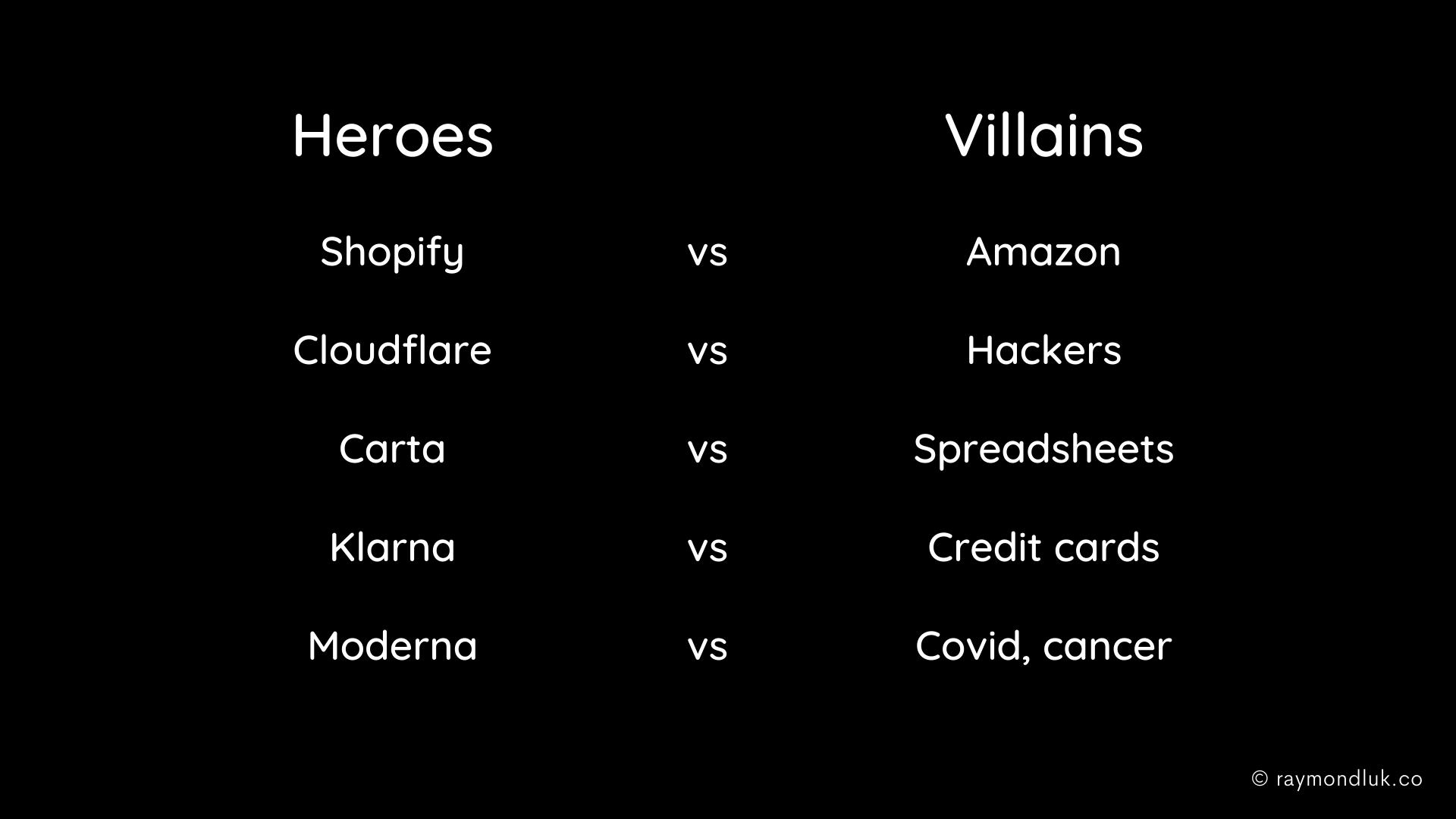
And here are some generic examples:
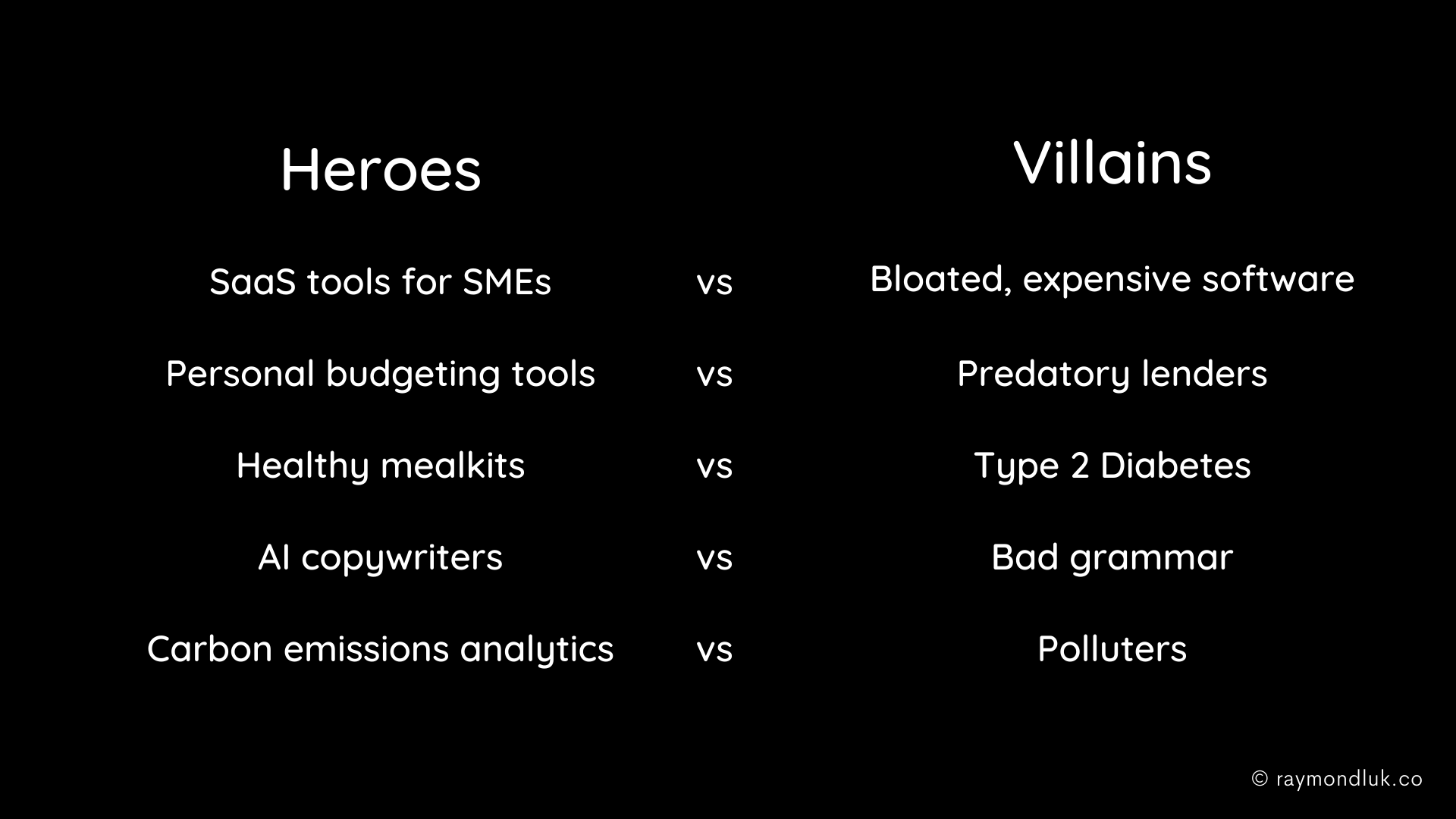
Victims
Next, to understand how evil a villain is, you should be able to feel the pain of their victims.
After heroes and villains, victims are the third character type you need for a heroic narrative. When I hear pitches, I’m often struggling to understand who has the problem. Who is hurt by the pain point? How are they suffering because of the problem? Do I care?
Many business stories aren’t interesting because they do not force you to empathize with the problem. Numbers like NPS scores or survey results do not build empathy.
Let’s flesh out the previous examples making sure there is a clear hero, villain and victim.
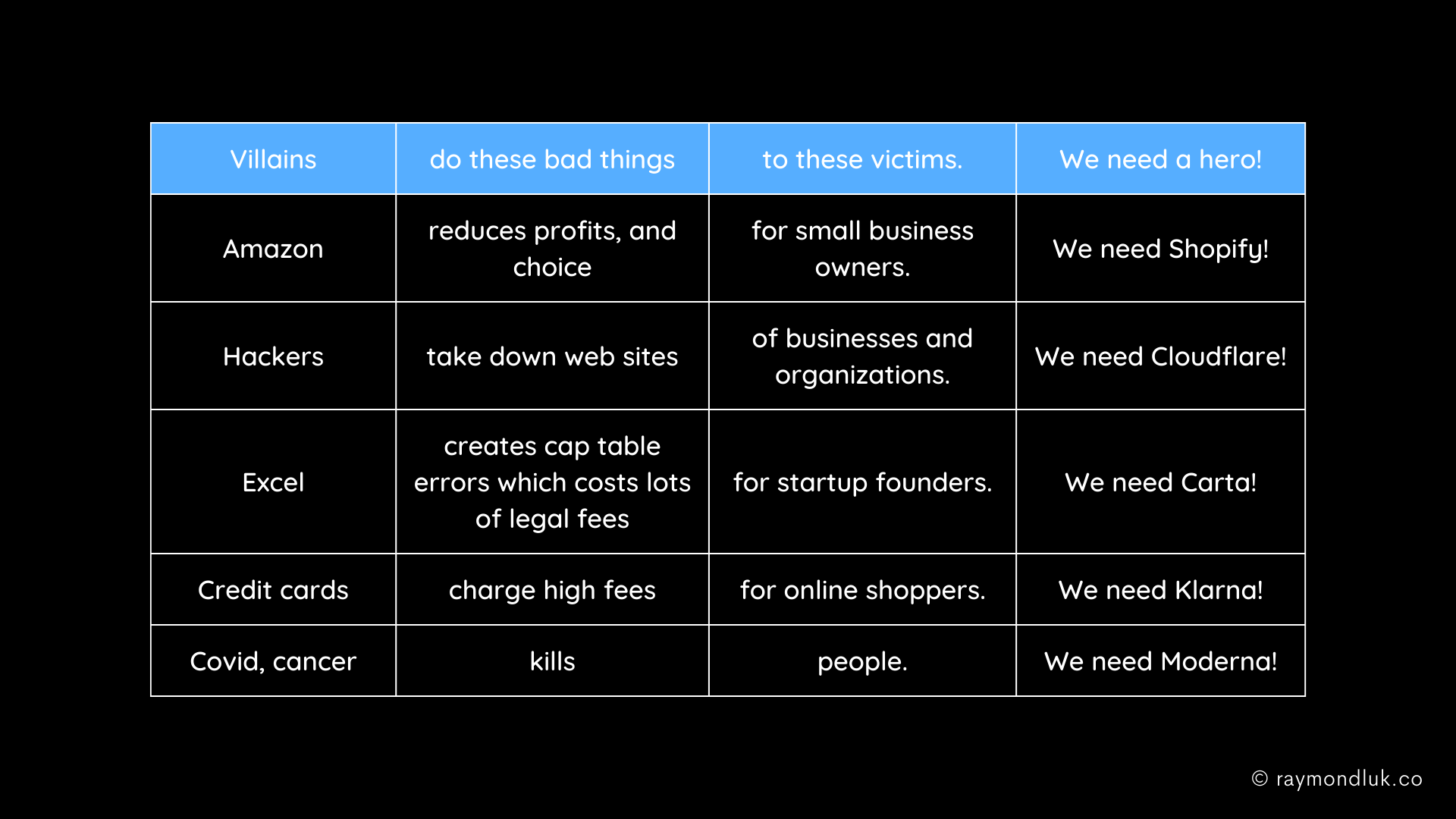
I like this sentence structure because it starts with the villain, then talks about victims before even introducing the hero. It’s the reverse of most elevator pitches.
Here are three different ways to tell Cloudflare’s story:
- Cloudflare provides security and privacy infrastructure for Web sites (no villain, no victims)
- Cloudflare stops hackers from taking down Web sites (no victim)
- Hackers take down millions of Web sites a year, causing financial and reputational hardship for businesses. Cloudflare to the rescue.
Note that I’m talking about story design, not marketing copy.
Here are a few more examples:
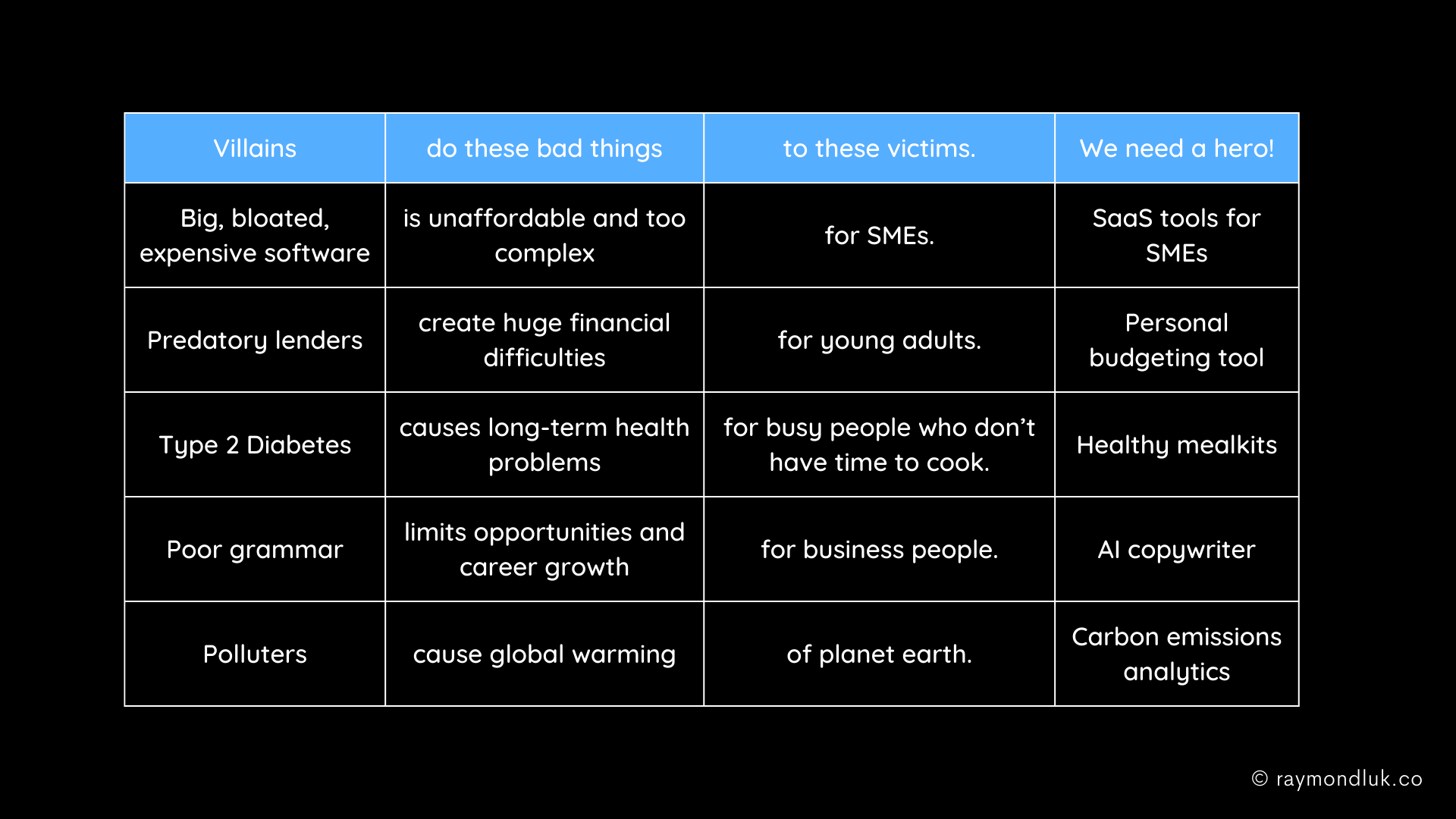
Real-world example: Goodlawyer
In my makeover of Goodlawyer’s pitch deck, I introduced a villain: law firms. Right from the title page I wanted someone for the hero to fight.
Compared to “Legal services marketplace built for founders”, saying “Making law firms obsolete” makes the reader want to know why law firms are so bad and how Goodlawyer is going to fix it. You’re more invested in the fight.
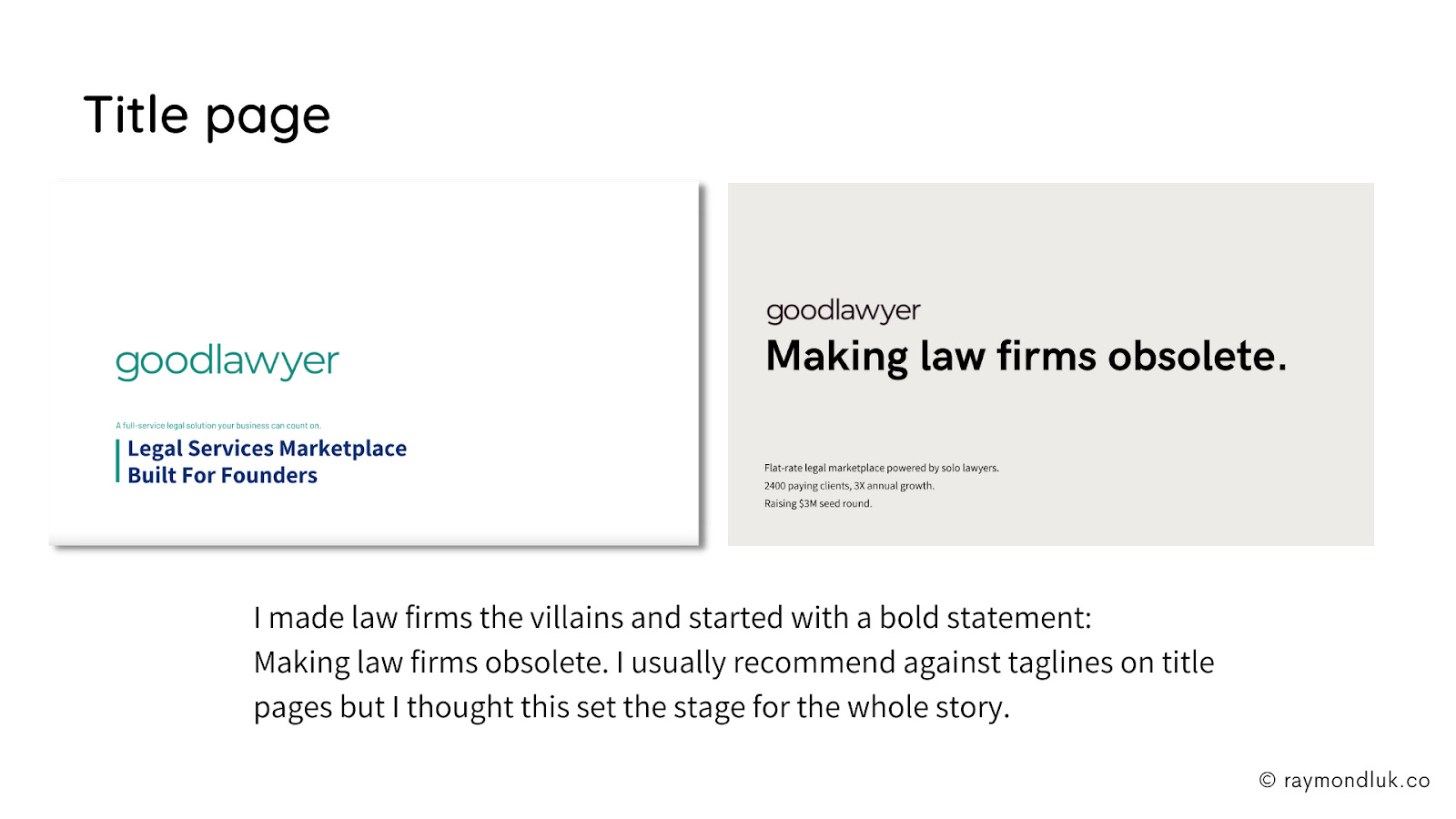
The problem slide is where the villain is usually introduced. Their original problem slides (they had two) were accurate but abstract.
Once I made the focus the villain (“Law firms are broken”) it made it much easier to describe the problem. Because now lawyers and founders are the victims.
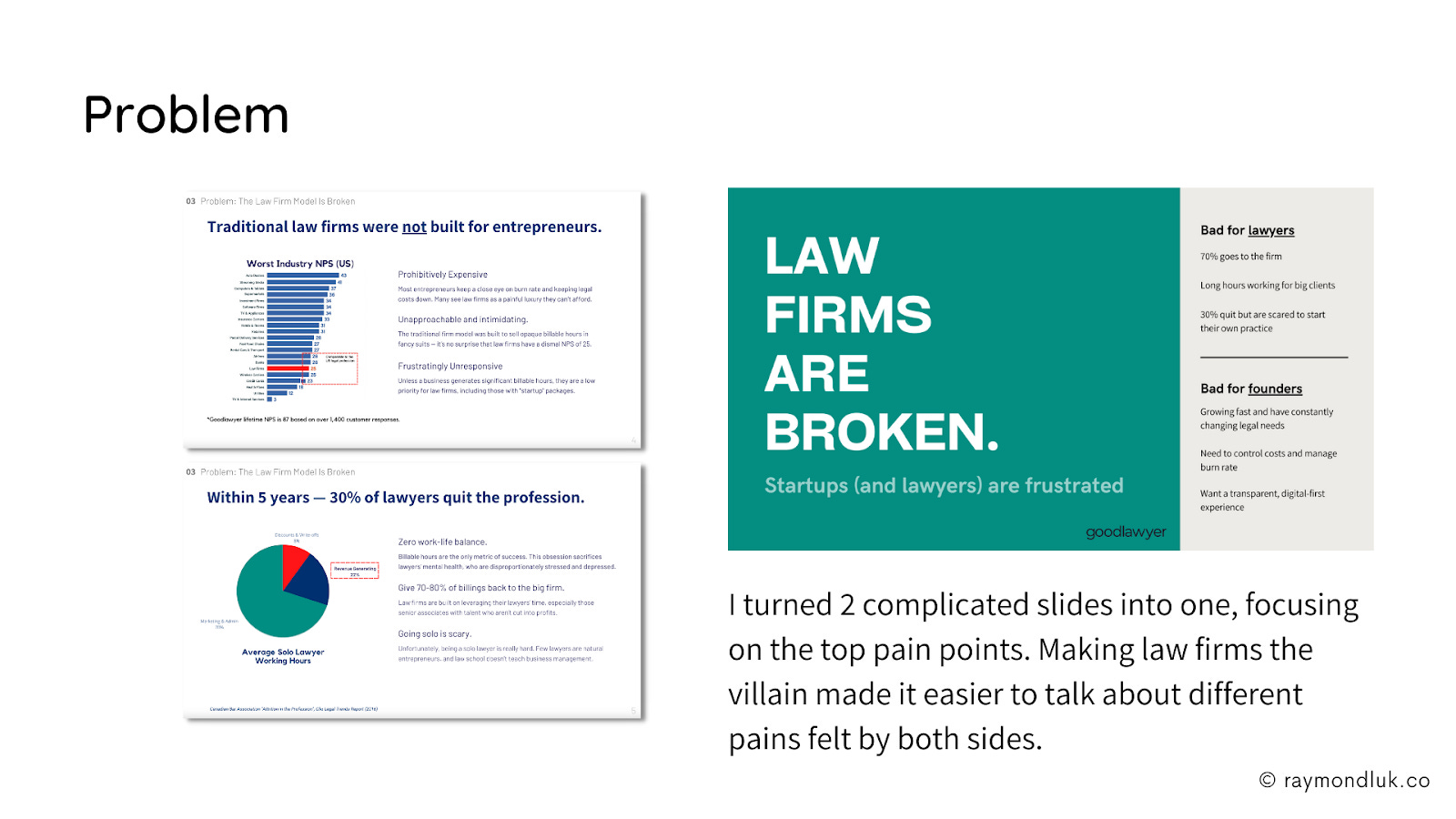
If we replaced Goodlawyer with Shopify, this is what the slide would look like:
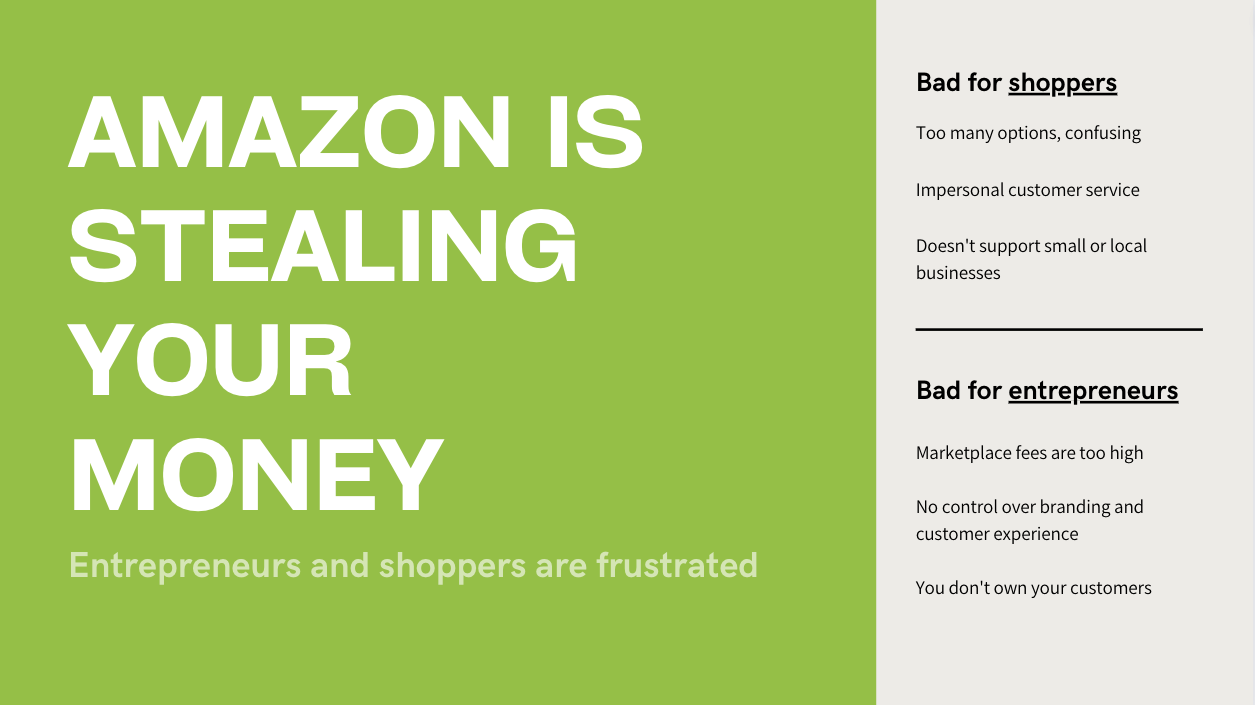
Arm the Rebels!
So far I’ve talked about using heroes, villains and victims to improve how you talk about the problem you solve.
But your main characters (hero, villain, victim) play a part in almost every slide in your deck. Here’s how:
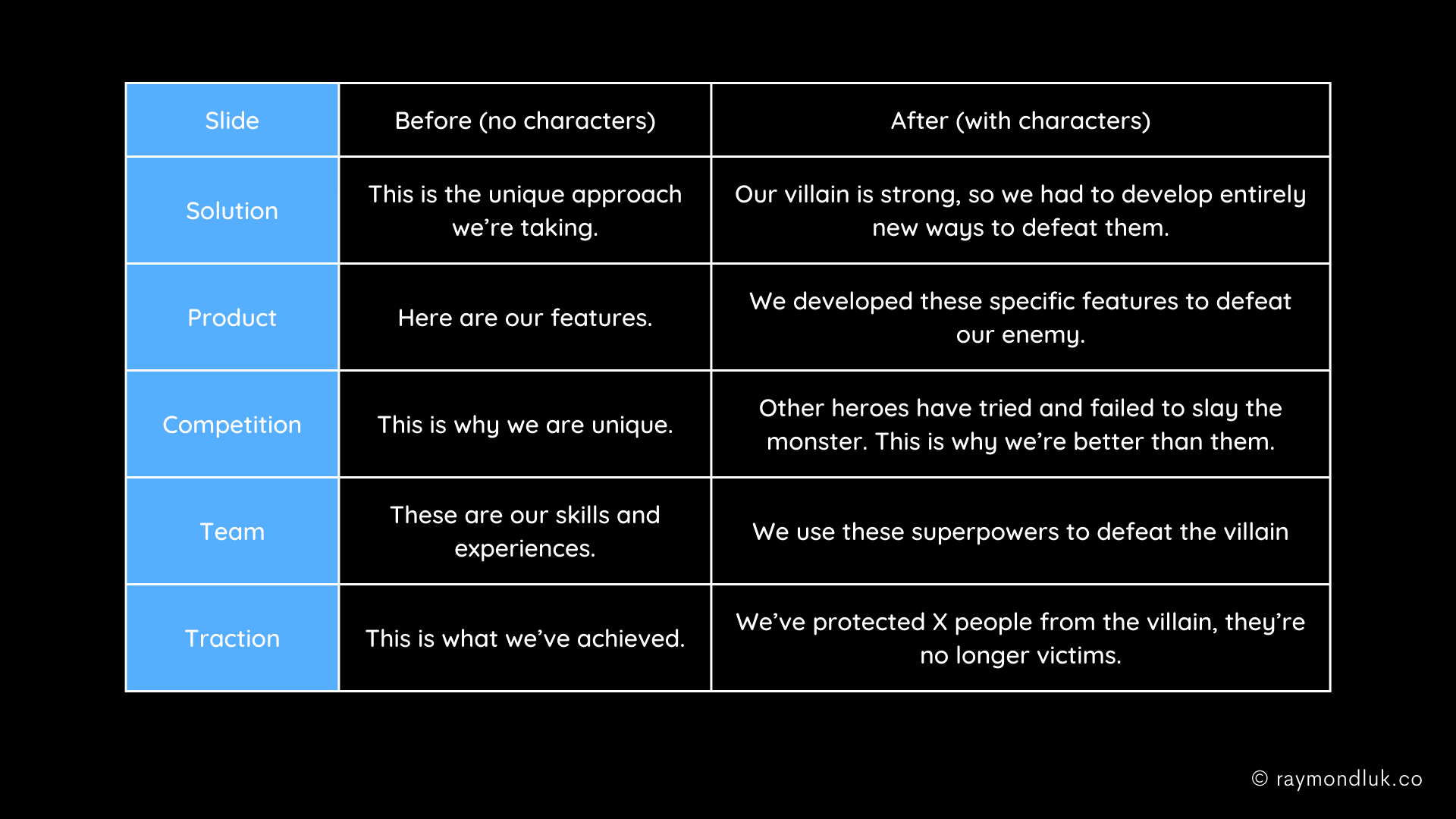
Not all characters will appear in all slides, but you should keep them in mind at all times. This will add cohesiveness to your story.
Be the hero, not the sidekick (conclusion)
I can summarize everything in three rules:
- If there’s no villain, there’s no need for a hero.
- If there’s no victim, there’s no crime.
- No one wants to invest in a sidekick.
When you’re developing your narrative you may not explicitly point to someone as being a villain. It’s easier to spot a villain in industries like health, security, military tech or innovations that disrupt the status quo.
But it’s worth finding the villain that applies to your startup. So you can go be the hero.




